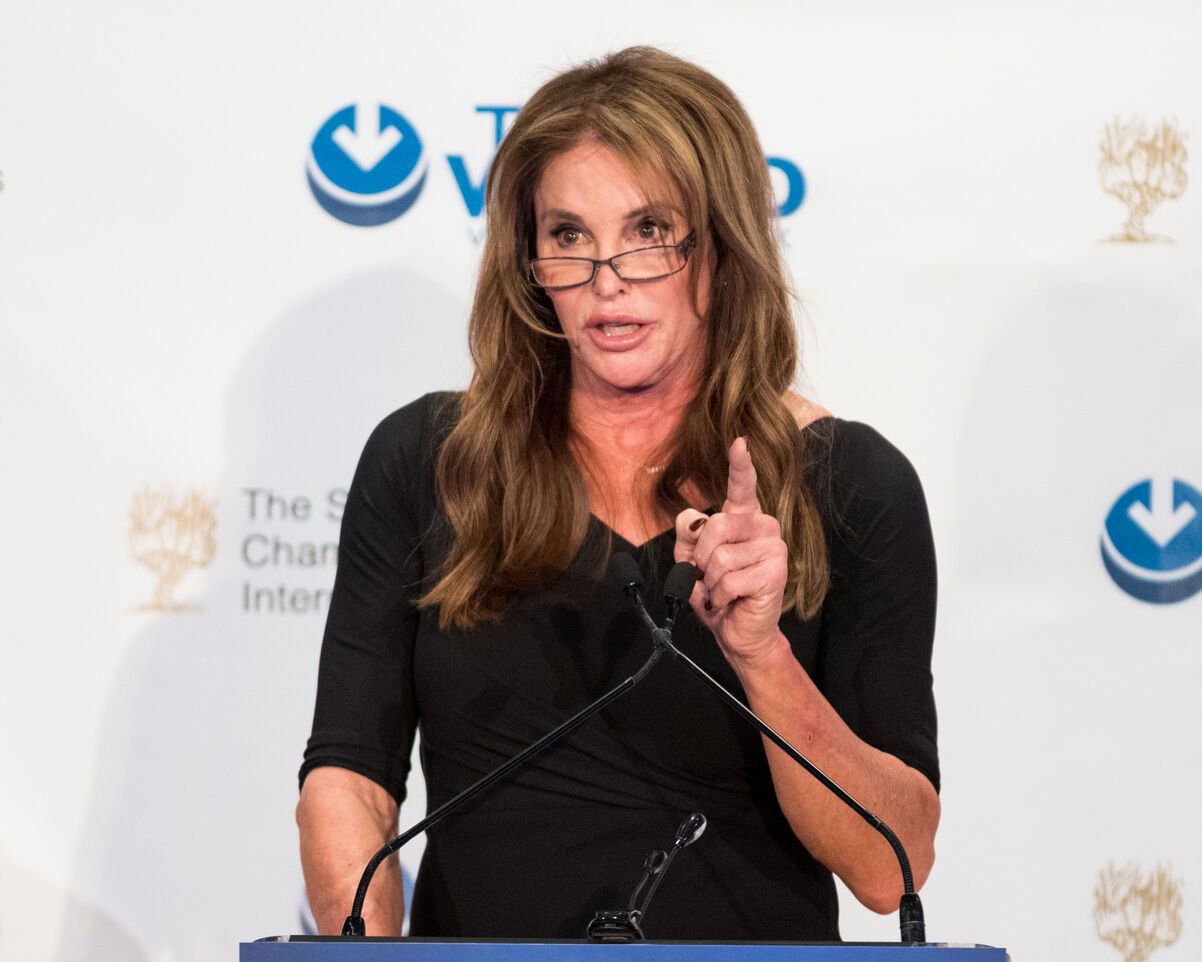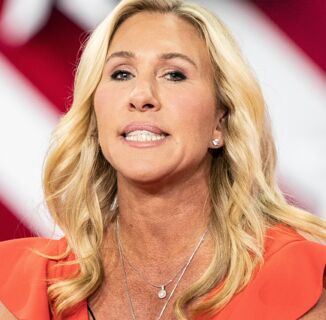The nation’s largest news wire service referred to Caitlyn Jenner by the name she was assigned at birth in a Friday news bulletin.
The Associated Press calls Jenner the “Olympic gold medalist formerly known as Bruce” in a brief report on her upcoming visit to the U.K. Parliament. Britain’s Channel 4 announced this week that the 68-year-old will be addressing lawmakers in the House of Commons on May 9 as part of its Diversity Lecture series.
The public broadcaster claims the talks are intended to “raise awareness and stimulate public debate about diversity issues.”
“Caitlyn Jenner is one of the most high profile transgender people in the world and her transition brought transgender issues into the mainstream, helping to stimulate debate and increase awareness,” Channel 4 says in a statement.
Given the athlete and former I Am Cait star’s support of President Donald Trump, the announcement has not been well-received among members of the trans community. Shon Faye, an editor-at-large at Dazed, says in a tweet that “Jenner’s life story is as far removed from what British politicians need to be hearing and considering on this issue.”
“British trans people are experiencing alarming rates of violence, harassment, discrimination,” she claims. “The suicide and mental health stats are dreadful.”
“Oh, good grief!” adds U.K. political activist Christine Burns. “Like there aren’t properly experienced trans advocates for equality and diversity nearer to home? Is she perhaps going to explain her support for the man who is persistently trying to force trans Americans out of public space?”
But the Associated Press’ decision to use Jenner’s former name in reporting on the story has not been better received among LGBTQ advocates.
“There is no need for any outlet to continue using Caitlyn Jenner’s prior name,” says Nick Adams, director of transgender media and representation at GLAAD, in a statement to INTO. “Printing a transgender person’s prior name without their permission is unnecessary and contributes to invalidating their authentic identity.
Using a trans individual’s discarded name in news reporting is often referred to as “deadnaming.” Despite being denounced by every leading LGBTQ advocacy group, the practice remains extremely common in contemporary journalism.
Of news updates published about Jenner over the past month, more than a dozen have referred to her prior name in the report. These include stories featured in the Birmingham Mail, Charlotte Observer, The Daily Mail, Fox News, Glamour, Hello, Jerusalem Post, Mental Floss, The Mirror, New York Daily News, The Odyssey Online, U.S. Weekly, Washington Post, and Your Tango.
Even the first line of her Wikipedia page deadnames her. In total, the entry uses Jenner’s former name 84 times.
Covering a figure with such a long history in public life is a complicated subject, given that the most people have known her as Caitlyn for a much shorter time than when she was a Wheaties-box-approved model of masculinity. Jenner first revealed her gender identity in an April 2015 sitdown with Diane Sawyer.
But after a Vanity Fair cover dropped two months later telling the public to “call [her] Caitlyn,” the National Lesbian and Gay Journalists Association (NLGJA) released a bulletin to news outlets instructing reporters to respect her wishes.
“Now that Jenner has publicly announced a gender identity, the best practice is to refer to Caitlyn Jenner by the name she announced,” the NLGJA says.
“Transgender people should be referred to by the name and gender with which they identify,” the group adds. “Some transgender people choose to take hormones or have medical procedures, but that’s not what determines the right name and pronoun to use. It is stating one’s gender identity that is what should guide word use.”
Nearly two years after the Vanity Fair cover first hit newsstands, GLAAD says it’s absolutely pointless for news publications to go out of their way to refer to her by a name she no longer uses.
“The public knows her as Caitlyn,” Adams says. “There’s no reason to refer to her by any other name.”
In the advocacy organization’s guide on covering the transgender community, GLAAD also advises journalists to avoid using phrases like “she wants to be called,” “she calls herself,” and “she goes by Susan” when profiling trans people, as this wording implicitly “[casts] doubt on a transgender person’s identity.”
“When a transgender person’s birth name is used in a story, the implication is almost always that this is the person’s ‘real name,” the organization claims.
Advocates say that poor media coverage of transgender lives reinforces the discrimination faced by this severely marginalized population. An IPSOS survey published in January showed that less than 40 percent of U.S. residents say they refer to trans individuals by the correct pronouns.
The phenomenon of misgendering is especially impactful for the disproportionate number of trans individuals who are regularly subjected to harassment, abuse, and violence. Last year, a record 28 transgender people were killed in the U.S., and worldwide estimates reported that at least 270 individuals were murdered in 2017 because of their gender identity.
Many of these victims were misgendered at the time of their deaths.
A.C. Dumlao, name change project coordinator at the Trans Legal Defense and Education Fund (TLDEF), tells INTO that Jennera multi-millionaire and reality stardoesn’t experience these harsh realities. But it sends a harmful message to the trans community that the privilege of wealth and fame doesn’t insulate Jenner from casual transphobia.
“If society won’t respect this rich, white celebrity, how much more respect will I receive as your average trans person?” Dumlao asks INTO. “Do I have to fear that someone will find out my deadname?”
The trans advocate says the Associated Press story sets a bad precedent for other outlets who report on Jennerbecause it “sets the tone.”
“Smaller publications can look at to the AP and say, ‘This is what they’re doing, so this is what we should do,’” Dumlao claims. “Because the Associated Press has such a wide reach, it means they have to be at the forefront of understanding.”
But if the news agency wants advice on how to cover trans people appropriately and affirmingly, it should look to its own style guide.
“Use ‘transgender’ for people whose gender identity doesn’t match the sex or gender they were identified as having at birth,” the AP advises, as cited in an October 2017 tweet. “Call people ‘transgender’ only if relevant; give the name they use publicly; avoid references to being ‘born’ a boy or girl.”
Photo via Michael Brochstein/SOPA Images/LightRocket via Getty Images
Don't forget to share:
Help make sure LGBTQ+ stories are being told...
We can't rely on mainstream media to tell our stories. That's why we don't lock our articles behind a paywall. Will you support our mission with a contribution today?
Cancel anytime · Proudly LGBTQ+ owned and operated
Read More in Impact
The Latest on INTO
Subscribe to get a twice-weekly dose of queer news, updates, and insights from the INTO team.
in Your Inbox













